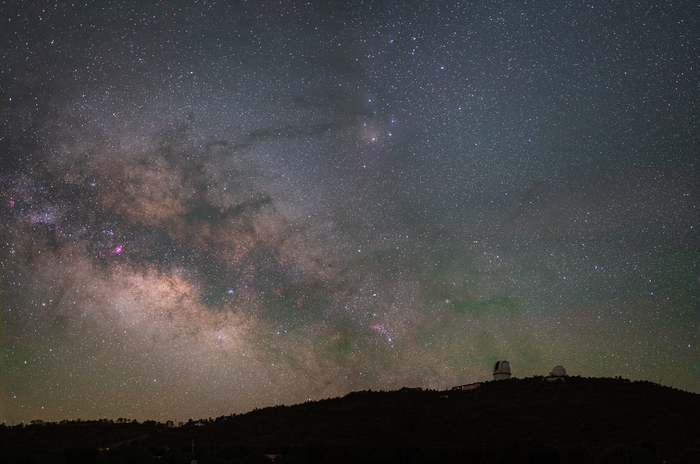FORT DAVIS, Texas — The world’s largest International Dark Sky Reserve is coming to Texas and Mexico, thanks to a partnership between The University of Texas at Austin’s McDonald Observatory, The Nature Conservancy, the International Dark-Sky Association (IDA) and many others. The designation, granted by the IDA, recognizes the commitment of organizations, governments, businesses and residents in the region to maintaining dark skies. The move will benefit not only astronomical research, but also wildlife, ecology and tourism.

Credit: Stephen Hummel/McDonald Observatory
FORT DAVIS, Texas — The world’s largest International Dark Sky Reserve is coming to Texas and Mexico, thanks to a partnership between The University of Texas at Austin’s McDonald Observatory, The Nature Conservancy, the International Dark-Sky Association (IDA) and many others. The designation, granted by the IDA, recognizes the commitment of organizations, governments, businesses and residents in the region to maintaining dark skies. The move will benefit not only astronomical research, but also wildlife, ecology and tourism.
The new Greater Big Bend International Dark Sky Reserve will encompass more than 15,000 square miles in portions of western Texas and northern Mexico. It is the only such reserve to cross an international border.
“This reserve protects both the scientific research and public education missions of McDonald Observatory,” said Taft Armandroff, director of UT Austin’s McDonald Observatory. “Since 1939, the observatory has enabled the study of the cosmos by faculty, students and researchers at UT Austin and other Texas institutions of higher learning, with topics ranging from planets orbiting nearby stars to the accelerating expansion of the universe.”
The core of the reserve, where the protection for dark skies is strongest, is formed by the lands of McDonald Observatory and The Nature Conservancy’s Davis Mountain Preserve. The reserve will protect numerous wildlife habitats and migration corridors passing through the Big Bend region.
“We are honored to be a part of the Greater Big Bend International Dark Sky Reserve,” said Kaylee French, education and outreach coordinator for the Davis Mountain Preserve. “This collaboration uniquely brings together working partners across a wide range, which spans international borders. Our dark skies are an invaluable natural resource that we are able to preserve only by working together, and we thank the International Dark-Sky Association for helping us to be responsible stewards of this now and forever protected resource.”
The full extent of the reserve spans the Rio Grande, from the Davis Mountains of West Texas to the Sierra del Carmen of northern Mexico. In the United States, it includes the Texas counties of Jeff Davis, Brewster, Presidio and a small section of Reeves County. It also includes Big Bend National Park, Big Bend Ranch State Park, the Black Gap Wildlife Management Area, and the Chinati Mountains State Natural Area.
South of the Rio Grande in Mexico, the reserve includes protected lands in the areas of Maderas del Carmen, Ocampo and Cañón de Santa Elena.
Four counties and five municipalities within the proposed reserve area updated their lighting ordinances to the International Dark-Sky Association’s latest standards in support of the application to create the reserve.
“The certification of this reserve is truly a historic moment for the dark sky movement,” said Ashley Wilson, IDA’s director of conservation. “We are recognizing decades of hard work, nocturnal environmental stewardship, stellar outreach programs and multiple local incentives to provide tangible and feasible solutions that limit the spread of excessive and wasteful artificial light. This demonstrates that partnerships and dark sky efforts at the landscape scale can become a reality with the dedication from a team of key stakeholders and passionate communities.”
It took a large and diverse group of advocates on both sides of the border to make the reserve a reality.Additionally, the application was supported by representatives from the National Park Service, the Texas Parks and Wildlife Department, and the National Commission of Natural Protected Areas in Mexico.
“Without the broad regional support and the long-standing efforts to preserve the natural beauty of the Big Bend region, a dark sky reserve of this scale would not have been possible,” said Teznie Pugh, superintendent of McDonald Observatory. “It has been a true community effort, and the people of the area should be proud of what we have all achieved together.”
— END —
Subject of Research
Not applicable




